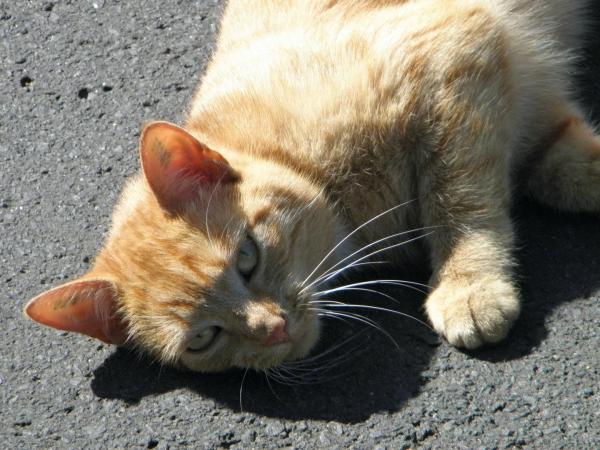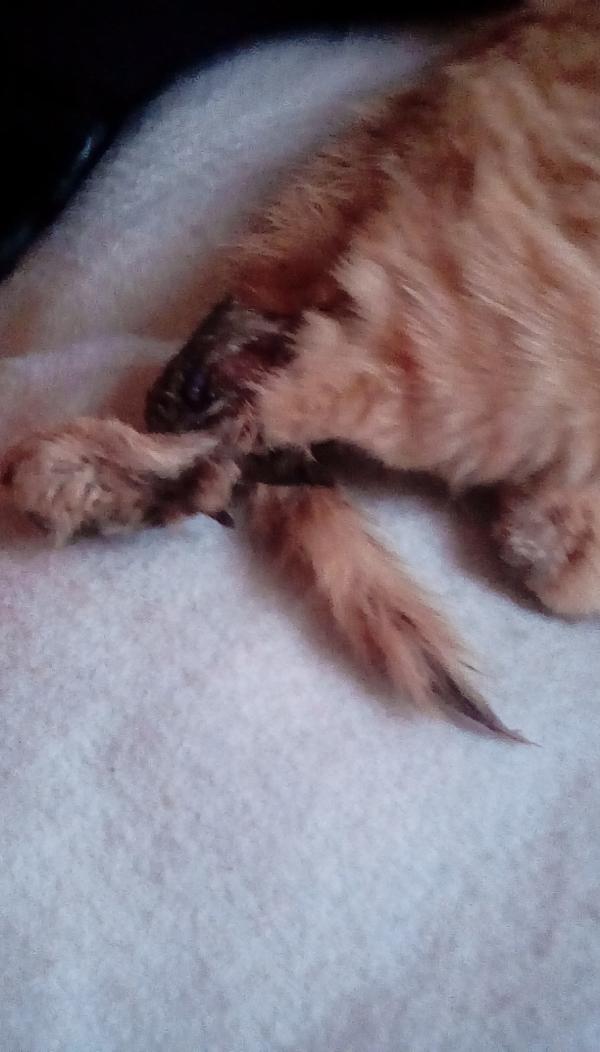First Aid for Cats: Road Accidents and Run Over Cats



See files for Cats
Unfortunately, many cats are hit by cars and run over. Both stray and domestic animals perish every year on the roads. Often they are blinded by a car's headlights and are stunned so they cannot escape. It is also all too common for cats to take refuge under a car to avoid the sun. They take a nap and don't wake up in time as the car pulls out.
Whatever the injuries produced after being run over by a vehicle, they can be severe. In most cases, cats that suffer road accidents require first aid and urgent veterinary care. In this AnimalWised article we talk about the most common injuries caused by being run over and how to deal with this situation. Stay with us and learn first aid for cats, focusing on road accidents and run over cats.
Road accidents: How to react when a cat's been run over
If you find a cat that has been run over it is important to act calmly. If the cat is lying on the ground check its breathing and pulse. The following sections will describe how to deal with different injuries, so you must be able to identify them.
Often you may see a cat is hit by a car but has no visible injuries. Even if this is the case, it is essential that you take the cat as soon as possible to the vet. It is possible there are internal injuries which can be life threatening. It may even be the cat is unconscious, but has no visible injuries or external cuts. You may need to supply first aid to a cat hit by a car, as we shall see later, but it will still be essential for the cat to be treated by a specialist.
No serious or visible injuries:
If the blow has not been very strong it is very likely that the injured cat has taken shelter under cars nearby. It will be very scared and may not know how to deal with the accident. Even domestic cats might want to be alone.
If you are unsure what to do if a cat is hit by a car, first approach slowly and gently, getting closer without any sudden movements. When you reach the injured cat, treat it with extreme care. You can use a blanket or towel to wrap it. This will prevent scratches and will allow you to pick it up without too much pressure. If you own a cat carrier, use this to move them and take them to the vet.
Even if we do not observe external injuries, a run over cat may suffer internal damage that needs veterinary care. Do not give it any food or water, because in the veterinary center they will probably need to medicate it.

Cat hit by car symptoms
There are different symptoms you need to look out for when a cat is run over. We will go into the specific ones in the sections below, but the important thing is to work out if they are still breathing. You can tell by the rise and fall of their chest, but it may be much slower than it should be.
When a cat has no visible injuries, they have internal hemorrhaging (bleeding - see more below). However, there are general symptoms to look out for. They include:
- Blood coming from nose or mouth
- Visibly broken bones
- External cuts or lacerations
- Missing teeth
- Unconsciousness
- Inability to get up/walk

State of shock
After shock or trauma, such as being hit by a car or any other sort of road accident, the cat can enter a state of shock. Shock in cats is characterized by the following symptoms:
- Pale skin
- Agitated breathing
- Increased heart rate
- Loss of consciousness
In extreme cases, shock in cats it can cause death. You must act quickly and with great delicacy. Caress the cat while you wrap it in a blanket to transfer it to the vet.

Unconsciousness
When the injured cat is unconscious you must pay attention to its breathing. If breathing is irregular and difficult, position the cat on its side with the head slightly tilted upward. This will facilitate its breathing. If you cannot hear the cat's breathing, take its pulse. The best place to take the pulse of a cat is its groin, where the hind legs are attached to the hip.
As the cat is unconscious, you will not know when it is experiencing pain. For this reason it is best to place it on a flat surface to move it. You can use a cardboard sheet and put a blanket or towel on it. Move it as little as possible and go immediately to the vet.

Superficial wounds
If the run over cat's wounds are not deep and or bleeding excessively you can cure them, or at least disinfect and clean them before receiving veterinary treatment. Always use appropriate materials.
Clean the wound with saline solution to remove dirt and prevent infections. You can cut the surrounding hair with extreme care so that it does not get into the wound, especially if it is a long haired cat. Once clean use a gauze and disinfectant like diluted iodine such as povidone or Betadine to treat the wound.
You can disinfectant solutions for humans but always diluted in a ratio of 1:10, 1 part of iodine to 9 parts water.
Once seen to by the vet it is likely that they will recommend using a healing ointment that will accelerate healing time.

Hemorrhages
If the wound is not deep you can clean it as you have seen in the previous point. If the cat has a hemorrhage with plenty of blood you must press on the wound with a gauze or towel and go immediately to the emergency vet.
Ideally, cover the wound with a sterile and elastic dressing. Tourniquets are not recommended as they stop circulation and may become dangerous. If the bleeding is on one leg you can consider a tourniquet, but do not push too hard and never keep it on for more than 10 or 15 minutes.
Internal bleeding
After being run over, cats frequently suffer internal injuries. If you see that the cat has a bloody nose or mouth this means it has internal injuries. These are very serious injuries that need urgent medical attention. Do not cover the nose or mouth of the cat. Instead, wrap it with extreme care in the blanket and take it to the vet urgently.
If there is abdominal hemorrhaging then there are certain symptoms to look out for:
- Distended abdomen (looks bloated)
- Blood coming from mouth and/or nose
- Can't get up/walk
- Limping
- Slow breathing
- Drowsiness
It is possible that a cat looks like there is no abdominal hemorrhaging on the outside, yet there are internal problems which seriously affect their well-being. They may remain lethargic, have blood in their vomit or stool, have discoloration in their gums or other symptoms. This is why we again stress the importance of taking them to the vet.

Dislocations and fractures
When fractures or dislocations are produced in one of the extremities it can be difficult to pick up the cat. This kind of injury is very painful and cause a lot of stress, so the cat will be on the defensive. Talk calmly until you can get close. Manipulate it carefully so as to not hurt it and never try to cure a broken or dislocated limb or joint at home. It needs medical attention.
It is possible that the cat's ribs are broken; this could pierce a lung. It is difficult to determine this with the naked eye. If you suspect the rupture is on the left leg, for example, lay the cat down on the right side to move it, always very carefully.
These are our tips on first aid for cats in the case of road accidents and run over cats. If you have any experience on the matter, please tell us in the comments section. Don't forget to take a look at our other first aid articles - they may save your cat's life!
This article is purely informative. AnimalWised does not have the authority to prescribe any veterinary treatment or create a diagnosis. We invite you to take your pet to the veterinarian if they are suffering from any condition or pain.
If you want to read similar articles to First Aid for Cats: Road Accidents and Run Over Cats, we recommend you visit our First aid category.






 Found a kitten on the freeway. It was hit on the leg and can't poop
Found a kitten on the freeway. It was hit on the leg and can't poop


 What do I do? HELP!!!
What do I do? HELP!!!







